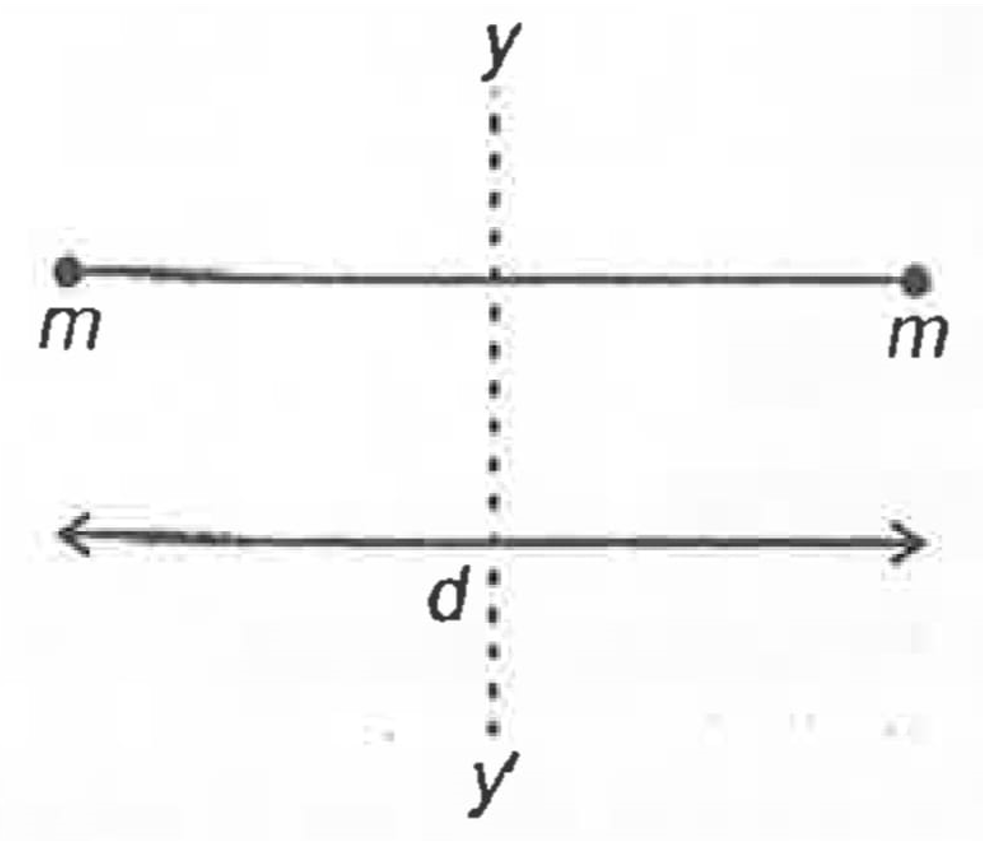If I is moment of inertia of a disc about an axis passing through its centre then find change in moment of inertia due to small change in its temperature Δt (α is coefficient of linear expansion).
To solve the problem of finding the change in moment of inertia (ΔI) of a disc due to a small change in temperature (Δt), we can follow these steps:
Step 1: Understand the Moment of Inertia
The moment of inertia (I) of a disc about an axis passing through its center is given by the formula:
I=12mr2
where m is the mass of the disc and r is its radius.
Step 2: Consider the Effect of Temperature Change
When the temperature of the disc changes, both the mass and the radius can change due to thermal expansion. However, for a disc, we primarily consider the change in radius since the mass remains constant.
Step 3: Relate Change in Radius to Temperature Change
The change in radius (Δr) due to a change in temperature (Δt) can be expressed using the coefficient of linear expansion (α):
Δrr=αΔt
This means that the change in radius is proportional to the original radius and the change in temperature.
Step 4: Express the Change in Moment of Inertia
To find the change in moment of inertia (ΔI), we can differentiate the moment of inertia formula with respect to the radius:
ΔI=I⋅Δrr⋅2
Substituting the expression for Δr we get:
ΔI=I⋅2⋅Δrr=I⋅2⋅αΔt
Step 5: Substitute for I
Now, substituting I=12mr2 into the equation:
ΔI=2(12mr2)αΔt
This simplifies to:
ΔI=mr2αΔt
Final Result
Thus, the change in moment of inertia due to a small change in temperature is given by:
ΔI=2IαΔt
where I is the original moment of inertia of the disc.
The moment of inertia (I) of a disc about an axis passing through its center is given by the formula:
I=12mr2
where m is the mass of the disc and r is its radius.
When the temperature of the disc changes, both the mass and the radius can change due to thermal expansion. However, for a disc, we primarily consider the change in radius since the mass remains constant.
The change in radius (Δr) due to a change in temperature (Δt) can be expressed using the coefficient of linear expansion (α):
Δrr=αΔt
This means that the change in radius is proportional to the original radius and the change in temperature.
To find the change in moment of inertia (ΔI), we can differentiate the moment of inertia formula with respect to the radius:
ΔI=I⋅Δrr⋅2
Substituting the expression for Δr we get:
ΔI=I⋅2⋅Δrr=I⋅2⋅αΔt
Now, substituting I=12mr2 into the equation:
ΔI=2(12mr2)αΔt
This simplifies to:
ΔI=mr2αΔt
Thus, the change in moment of inertia due to a small change in temperature is given by:
ΔI=2IαΔt
where I is the original moment of inertia of the disc.
Similar Questions
The moment of inertia of a copper disc, rotating about an axis passing through its centre and perpendicular to its plane
View SolutionIf I is the moment of inertia of a solid body having α-coefficient of linear expansion then the change in I corresponding to a small change in temperature ΔT is
View SolutionMoment of inertia of a ring of mass M and radius R about an axis passing through the centre and perpendicular to the plane is
View SolutionWhat is the moment of inertia of a circular disc about one of its diameters ?
View SolutionThe moment of inertia of a uniform rod of length 2l and mass m about an axis xy passing through its centre and inclined at an enable α is

View SolutionThe moment of inertia of ring about an axis passing through its diameter is I. Then moment of inertia of that ring about an axis passing through its centre and perpendicular to its plane is
View SolutionThe moment of inertia of a ring about its geometrical axis is I, then its moment of inertia about its diameter will be
View SolutionCalculate the moment of inertia of a ring of mass 2kg and radius 2cm about an axis passing through its centre and perpendicular to its surface.
View SolutionCalculate the moment of inertia of a ring of mass 2kg and radius 2cm about an axis passing through its centre and perpendicular to its surface.
View Solutionfind moment of inertia about an axis yy which passes through the centre of mass of the two particle system as shown

View Solution
